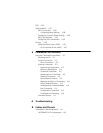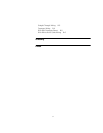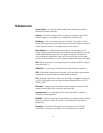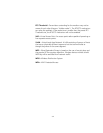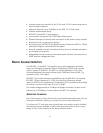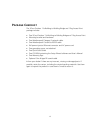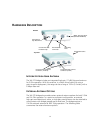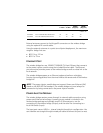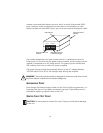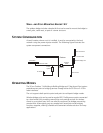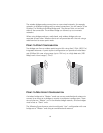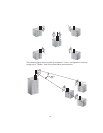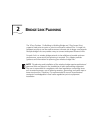
1-5
External antennas connect to the N-type RF connectors on the wireless bridge
using the optional RF coaxial cables.
Using the external antennas in a point-to-multipoint deployment, the maximum
range for bridge links are:
802.11b,g: 2.2 km
802.11a: 3 km
ETHERNET PORT
The wireless bridge has one 10BASE-T/100BASE-TX 8-pin DIN port that connects
to the power injector module using the included Ethernet cable. The Ethernet
port connection provides power to the wireless bridge as well as a data link to the
local network.
The wireless bridge appears as an Ethernet node and performs a bridging
function by moving packets from the wired LAN to the remote end of the wireless
bridge link.
POWER INJECTOR MODULE
The wireless bridge receives power through its network cable connection using
power-over-Ethernet technology. A power injector module is included in the
wireless bridge package and provides two RJ-45 Ethernet ports, one for
connecting to the wireless bridge (Output), and the other for connecting to a
local LAN switch (Input).
The Input port uses an MDI (i.e., internal straight-through) pin configuration. You
can therefore use straight-through twisted-pair cable to connect this port to most
Item Antenna Type Gain (dBi) Horizontal
HPBW*
(Degrees)
Vertical
HPBW*
(Degrees)
2.4 GHz 5.0 GHz
3CWE591 3Com 6/8 dBi Dual-Band Omni 6 8 360 5GHz: 20
2.4GHz: 30
3CWE596
3Com 18/20 dBi Dual-Band Panel
18 20 18 19
3CWE598
3Com 8/10 dBi Dual-Band Panel
8 10 60 60
* Half-power beam width
NOTE: The power injector module does not support Power over Ethernet (PoE)
based on the IEEE 802.3af standard. The wireless bridge unit must always be
powered on by being connected to the power injector module.



